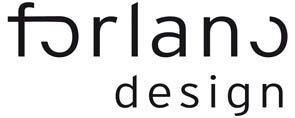SHIELD OF VOICES
2019. Parliament of Western Australia and ECU.
Stainless steel. 1100mm diameter.
ART CELEBRATES WOMEN IN POLITICS
1832 marks the year the Western Australian Legislative Council was created. In the same year, the Great Reform Act enfranchised most of the male middle-class in England. It was at this time that the emerging nouveau riche adopted upper-class practices such as the use of calling cards, to access and maintain hierarchical power structures. Architecturally, the interior of the Parliament of Western Australia is modelled on this period, maintaining a distinctive Victorian gentlemen’s club aesthetic, reflecting the past exclusion of all, bar the white male patriarchy.
Calling cards were a formal request to speak to the occupants and control class structures by vetting visitors. Upper-class homes and gentlemen’s clubs had silver trays at the entry for accepting visitors’ cards. The cards conveyed a person’s character or a message through symbolic flora, nature and hand position illustrations.






HIGHLIGHTING COMMUNITY ISSUES
This work aims to redress the conflict of the gentlemen’s club-style interior and its association with the period of gender and class discrimination by reinterpreting the calling card in contemporary materials and processes to reflect the 93 women Members of the Parliament of Western Australia. The cards represent the feminine and diverse new views these women brought as participants for the benefit, often, to women and those with suppressed voices, similarly utilising symbolism of flora and hand positions to symbolise the Member's parliamentary contributions and intentions.
The silver tray is now oversized, wall-mounted, and becomes shield-like, suggesting the collective strength and determination of these women and celebrating their contribution over the last 100 years. Yet notably, it quotes Edith Cowan with one of her election platforms: Equal Pay for Equal Work, and reminds us that despite progress since this 1921 quote, the ongoing gender pay gap still exists.
Circling the edge in a clock-like manner, it then quotes Lynn McLaren's 2012 inaugural speech through the text Representing Diverse Voices and asks, what wisdom may have been excluded in the past or into the future due to a lack of diverse voices?
Finally, the last 'quote' Rights of Nature and All Future Generations is as yet unattributed, nor dated. This urges the spectator to consider: Who will ensure this land is equally capable of supporting the life of its future inhabitants, as it has for its past inhabitants?

